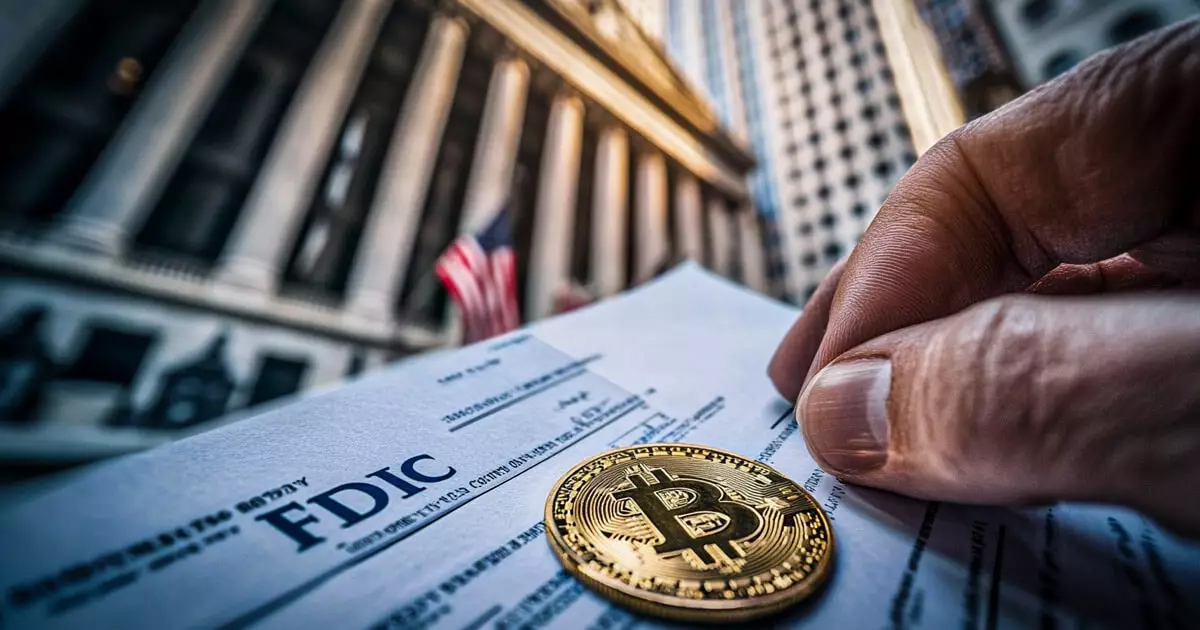As the financial landscape undergoes significant changes due to the rise of digital assets, the Federal Deposit Insurance Corporation (FDIC) is taking steps to revise its regulatory framework concerning banks engaged in cryptocurrency-related activities. As reported by Barrons on February 5, the FDIC is preparing to amend its guidelines, potentially allowing banks to participate in certain crypto-related services without the need for prior regulatory approval. This marks a notable shift from previous stringent evaluations and could open new avenues for banks to explore cryptocurrency offerings more freely.
The move towards more accommodating guidelines appears to be reflective of an increasing demand from financial institutions for crypto custody services and innovative alternatives to traditional stablecoins. Notably, banks are advocating for solutions like tokenized deposits—a concept that aims to blend checking accounts with blockchain technology. Such advancements suggest a broader alignment of banking infrastructure with the demands of the digital asset ecosystem, paving the way for integrated services that may redefine traditional banking roles.
On the same date, the FDIC also released a substantial collection of 175 documents related to its oversight of banks regarding crypto services. This release is pivotal, showcasing a shift in the agency’s previous reticence towards transparency, specifically in the context of the 2022 “pause letters.” These documents contained correspondence sent to 24 financial institutions, advising them to halt crypto-related services amidst broader regulatory concerns.
In an effort to enhance transparency, FDIC acting chairman Travis Hill emphasized that this decision goes beyond the requirements outlined by the Freedom of Information Act (FOIA). The FDIC’s response to a FOIA request filed by Coinbase reveals underlying tensions between traditional banks and the rapidly changing crypto landscape, with echoes of anxieties surrounding a rumored 15% deposit cap on institutions offering crypto-friendly services. While the initial response in December 2024 was heavily redacted, an unembellished version published on January 3 was met with scrutiny by industry leaders seeking clearer regulatory guidance.
Pressure and Resistance from the FDIC
The insight gleaned from the released documents illustrates the tension between banks seeking to explore digital assets and the regulatory barricades constructed by the FDIC. In a critical assessment, Hill noted that requests from banks for crypto-related services often faced considerable resistance. The FDIC’s longtime silence and repeated requests for more information sent a signal that moving forward with such initiatives would prove challenging, effectively causing many banks to withdraw their crypto aspirations.
Coinbase’s chief legal officer, Paul Grewal, further highlighted issues surrounding the regulatory approach, alleging that the FDIC was employing a strategy of “regulation by exhaustion.” This strategy involves an initial request for banks to halt crypto-related activities, followed by extended periods of silence during which banks would face mounting pressure, leading many to ultimately abandon their crypto endeavors. The FDIC’s rationale for its stance included concerns about Bitcoin’s volatility, the potential reputational risk, and consumer protection issues.
Further scrutiny stemmed from the internal communications among FDIC officials, particularly in relation to the term “deposit.” Caitlin Long, founder and CEO of Custodia Bank, pointed out that the internal chats revealed a stark caution against banks accepting deposits from crypto firms. The emphasis on avoiding “crypto deposits” distinctly highlights the regulator’s apprehension towards integrating digital assets into traditional banking frameworks, imposing additional constraints on how financial institutions engage with the evolving crypto market.
Drawing from this evolving discourse, it is evident that the FDIC is caught between the rapid advancement of technology and its foundational role to ensure financial stability and consumer protection. As the agency reshapes its regulatory parameters, the balance between fostering innovation and safeguarding the financial system will remain a contested space, reflective of broader societal debates regarding the future of cryptocurrency in finance.
The FDIC’s tentative progress towards embracing cryptocurrency in the banking sector hints at a broader trend in regulatory frameworks adapting to digital realities. The resultant tension between traditional banking roles and the burgeoning crypto landscape will continue to shape policymaking and the strategies employed by financial institutions as they navigate this intricate terrain.

